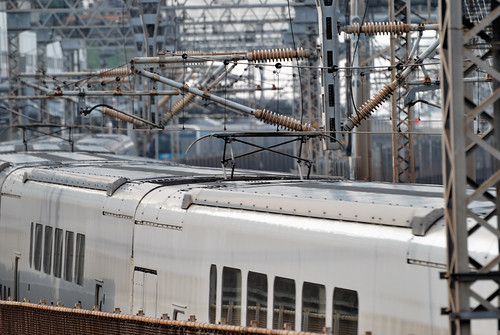With more bicyclists on the District’s streets, the D.C. Council should review the rules governing their behavior. The prohibition of bicycles on sidewalks should be extended from the downtown core to busy areas such as Georgetown, Dupont Circle, Cleveland Park and Glover Park. Sidewalks are supposed to be safe for pedestrians, but bicyclists are acting as if they have the right of way.
The Metropolitan Police Department should enforce the law against bikes running red lights and stop signs. If bicyclists obeyed basic rules, they might find less aggressive driving by motorists. Bicyclists also should not ride in the wrong direction on one-way streets unless there is a designated bike lane. Bicyclists should make sure drivers can see them, especially after dark. In any collision with a motor vehicle, right or wrong, the bicyclist is most likely to come out second-best.
Maybe Capital Bikeshare could remind its customers of proper bicycle behavior and courtesy. If that behavior doesn’t improve, perhaps we will head in the direction of countries where bicyclists are required to be licensed.
Hays Browning, WashingtonIt's disappointing that the Post would publish this. Although it is the opinion of a letter writer, it perpetuates misconceptions and does little if anything to advance the needs of anyone: driver, cyclist or pedestrian.
First, why are cyclists on the sidewalk in the first place? Because they like scaring little old ladies walking there? No. They ride on the sidewalk, because they do not feel safe and comfortable riding in the street. If Mr. Browning would like the cyclists to get off the sidewalk, he should advocate for better bicycle facilities. Cyclists rarely if ever bike on the sidewalk along 15th St. NW, because they have a safe, comfortable place to ride designed for them - the 15th St. cycletrack.
Likewise, cyclists will not ride on the sidewalks in these other locations either, if provided with safe and comfortable options.
If bicyclists obeyed basic rules, they might find less aggressive driving by motorists.
Who is Mr. Browning referring to? Does he have insight into anyone else's driving behavior besides his own? How can he make this assertion? I might ask him if he would somehow alter his driving habits if he perceived all the cyclists behaving the way he would like. Does he currently drive aggressively around cyclists on purpose? If not, then who does he claim does, and how does he know they will change their behavior? Or is he just making this up?
If that behavior doesn’t improve, perhaps we will head in the direction of countries where bicyclists are required to be licensed.
Like where? I just spent 10 minutes on Google and could not find a single example. If Mr. Browning knows of a place that has bicycle licensing that results in greater safety for all road users, I'd love to hear about it.

























